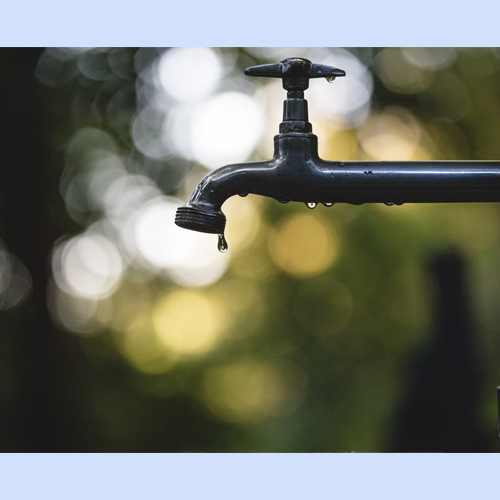
The National Plumbing Code and the Safety Code of the Régie du bâtiment du Québec are unanimous and consistent: all drinking water systems in institutional, businesses and industrial buildings in Quebec must be protected by backflow prevention devices, according to CSA B64.10. In addition, all verifiable backflow prevention devices must be certified functional annually according to CSA B64.10.1. Since 2007, the Régie du bâtiment has encouraged all engineers, contractors and owners to ensure that Quebec buildings are compliant by applying this standard, which has been in force since the 1990s. But what about in reality? Where is Quebec at?
Since regional and provincial organizations do not keep any statistics on the upgrades of plumbing systems, why not compare the situation in Quebec to the American initiatives? The American Water Works Association (AWWA) Cross-Connection Control Committee (AWWA CCC Committee), which is made up of U.S. and Canadian experts, had surveyed the water suppliers. The survey results were published in 2018 and some interesting conclusions are drawn from this initiative. Here are the highlights.
In 2017, in the United States, AWWA conducted a national survey with the water suppliers. A total of 724 organizations from 50 States responded. The objectives were to measure the quantity and quality of cross-connection control programs currently imposed by the water suppliers and to explore a correlation between the level of compliance and the size of the water system. In addition, the survey made it possible to determine more precisely the needs and challenges related to the implementation of a control program based on the investments required, the imposition of laws and the customer training.
Although the survey is only for the United States, the committee was keen to highlight the clarity of the Canadian standard CSA B64.10 and praised its accuracy. It is indeed a better guide with regards to the indication of the protection required at the entrance of drinking water according to the vocation of a building or the protection required according to the risk of the application at the point of use.
Une des révélations du sondage est que le manque de connaissances et de mise en place de programmes est généralisé à toutes les tailles de réseaux de distribution d'eau, et non seulement aux plus petits. Les répondants qui ont implanté un programme affirment qu'au moins une personne y est attitrée. Toutefois, plusieurs autres répondants qui n'ont pas de programme officiel se fient uniquement aux codes et aux lois en vigueur. Ils nourrissent ainsi un doute sur la rigueur et l'assiduité des propriétaires de bâtiments à se conformer aux règlements.
Bien que les fournisseurs d'eau exigent l'installation du dispositif antirefoulement à l'entrée d'eau du bâtiment afin de protéger le réseau d'aqueduc public, le propriétaire a aussi un rôle à jouer. En effet, celui-ci doit se préoccuper de la santé des occupants en identifiant les sources potentielles de contamination présentes dans le bâtiment. Il doit isoler celles-ci de l'eau potable à l'aide d'un dispositif antirefoulement. Même si les répondants insistent seulement sur le contrôle à l'entrée d'eau, ils affirment que les programmes les plus efficaces et les plus respectueux de la santé publique sont ceux qui obligent la certification annuelle des dispositifs à l'entrée d'eau ainsi que dans le bâtiment.
Suppliers who have implemented a program all use auditors who are trained, monitored and certified under a recognized regional or national program. Canada, including Quebec, can be proud to have a uniform training program from coast to coast. In Quebec, all auditors who practice this discipline are registered in the Quebec register managed by the AWWA Quebec section.
All water suppliers are aware of the need to minimize incidents of water contamination in the distribution systems. Several of the current issues were also confirmed in the survey. The most important issues are the followings:
While programs to prevent drinking water contamination are in place, water suppliers must remain vigilant and continue to educate their customers on the vulnerability of both municipal (public) and building-indoor (private) distribution systems. In Quebec, municipal water distribution facilities are numerous, complex and exposed daily to many variations in their environment. It is therefore important that everyone works together to raise awareness that water is an essential resource that must be preserved.
To know more: LeBas, Mitchell J., Stewart, C. et Garner, S. (2018). Status of backflow prevention and cross-connection control programs in the United States. Journal - American Water Works Association, 110(2), 48-53.
Online consultation at: https://awwa.onlinelibrary.wiley.com/doi/10.1002/awwa.1003
We use cookies to understand how you use our site and to improve your experience. This includes personalizing content and advertising. By continuing to use our site, you accept our use of cookies, terms and conditions, privacy policy. Confused? Send us an e-mail.
I acceptWe use cookies
Respecting your privacy matters to us. We use cookies to personalize our content and facilitate your digital experience. Some cookies may be collected with your consent.
Essential
Essential cookies help make a website usable by enabling basic functions such as page navigation and access to secure areas of the website. The website cannot function properly without these cookies.
Performance
These cookies enable us to analyze navigation on our sites and improve their operation.
Customization
Preference cookies enable a website to remember information that modifies the behavior or appearance of the site, such as your preferred language or the region you are in.
Targeted advertising
These cookies help us limit the number of times you see an advertisement, personalize our offers and services according to your centers of interest, measure the effectiveness of an advertising campaign, and so on. They may be shared with our partners.
We use cookies
Respecting your privacy matters to us. We use cookies to personalize our content and facilitate your digital experience. Some cookies may be collected with your consent.